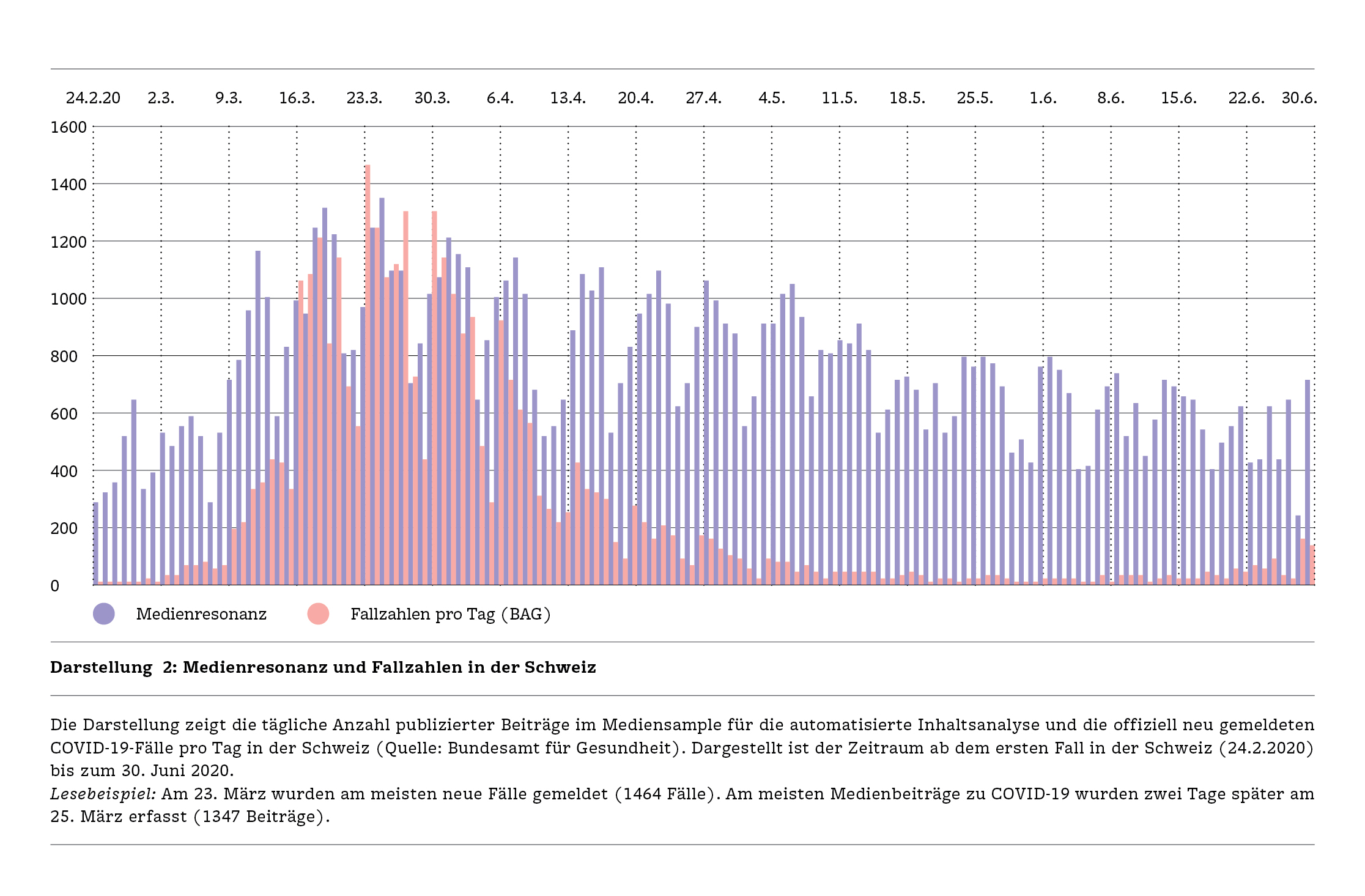Navigation auf uzh.ch
Navigation auf uzh.ch

Seldom was a topic so ubiquitous in the Swiss media as the coronavirus pandemic. On some days during the first half of 2020, 70 percent of all media reporting was devoted to the subject. In comparison, in 2019, an election year, the climate debate was top of the agenda but featured in just over 10 percent of all reporting at most. These are the findings of a study by the University of Zurich’s Research Center for the Public Sphere and Society (fög), which analyzed media reporting on the Covid-19 pandemic in German-speaking and French-speaking Switzerland between January and June 2020 using quantitative content analyses.
“The role of media is to place events in context, examine them from various perspectives, and maintain a critical distance from decision-makers. Especially in extraordinary situations like the coronavirus pandemic, in which there is a great deal of uncertainty, developments come thick and fast, and authorities gain new powers, the media are indispensable,” says Mark Eisenegger, communications specialist and director of the fög.
The study shows that media reporting on the pandemic encompassed a wide range of areas including medicine, politics and economics. Experts played a significant role here, giving input in 83 percent of media reports. The relevance of reporting in the media was also relatively high. “The media deal with the coronavirus pandemic and its consequences mainly from a broad societal perspective rather than highlighting individual aspects or stories. In addition the reporting is mainly fact-based,” says Eisenegger.
In the scientific field, unsurprisingly, virologists, epidemiologists and immunologists dominate: Among the 30 researchers with the most media resonance during the period examined, there were only three economists. “Although the pandemic affects all areas of society, hardly any attention is paid to other disciplines such as sociology, psychology and political science,” criticizes Eisenegger. “Scientists are also strongly underrepresented.” Only two of the 30 scientific experts with the most exposure were women.

While the study on media reporting found high quality overall in terms of diversity and relevance, it found deficits when it comes to presenting them in context. Reports with interpretation and explanation of the background context based on substantial journalistic research made up only around six percent of all the reports analyzed. The majority of the reporting was limited to imparting information, i.e. pure news reporting. The findings show that the media generally maintained a critical distance from the government and authorities. In the sensitive phase before the lockdown, during which decisive measures against the pandemic were being decided, this critical distance was less in evidence. In addition, figures and statistics on infection and death rates naturally played a significant role in Covid-19 reporting: They were the focus of more than 27 percent of reports, and were often given without additional context.
The study also found further differences between the types of media. Subscription-based media and public radio came out well, standing out with a particularly high variety of topics and experts, higher relevance and more context. Sunday papers or weekly publications and public radio maintained the greatest critical distance from authorities and government. Tabloid and daily media had less variety in their reporting and tended to simply report figures from the pandemic without placing them in context. They did not, however, resort to alarmist over-dramatic reporting of the threats.
The media in French-speaking Switzerland reported more on the health threats posed by coronavirus, which can be explained by the high infection rate in that region. Criticism of the authorities, meanwhile, was higher in German-speaking Switzerland. The fög study also found clear differences between the language regions of Switzerland in terms of which experts they featured. Media outlets in the French-speaking part of Switzerland gave a lot of air time to WHO experts Tedros Adhanom and Michael Ryan, while the German-speaking region looked more toward Germany, with Christian Drosten for example getting more resonance.
Read the whole study: link